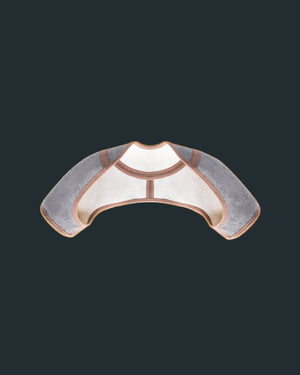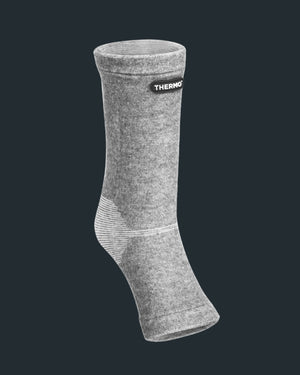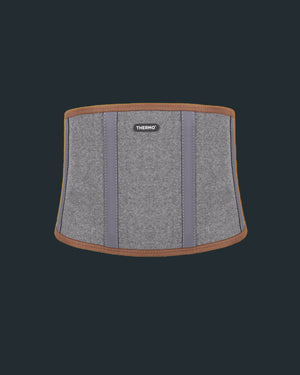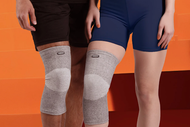Are you suffering from poor blood circulation? In this informative guide, find out how to increase blood flow to your feet using natural methods.
Healthy blood circulation is vital for transporting oxygen and nourishment down to the farthest reaches of the body, including the feet.
However, gravity, aging, and inactivity can lead to poor circulation. Boosting blood flow enhances energy, aids recovery, and keeps the vessels and cells of the lower extremities healthy into our later years.
Simple lifestyle tweaks make a world of difference regarding consistent, vigorous circulation benefiting the whole body. This guide shows you how to increase blood flow to your feet.
Best Practices to Increase Blood Flow to the Feet
Here’s how you can overcome the poor blood circulation:
General Exercise
Exercise is one of the most straightforward and effective methods to improve blood flow. Any cardiovascular activity that raises your heart rate will stimulate blood to circulate throughout your body.
Exercise options like walking, swimming, cycling, or light strength training can all get your blood flowing. Aim for approximately 30 minutes of moderate exercise daily to boost your blood flow.
This will send freshly oxygenated blood pumping down to your toes and enhance circulation, nourishing the brain, internal organs, and tissues all over your body.
Exercise can also reduce high blood pressure and plaque buildup, which can obstruct blood vessels.
Start slowly if you are new to routine exercise, incrementally increasing duration and intensity over time. Consistently challenging your heart rate facilitates nutrient-rich blood reaching the extremities while keeping your circulatory system functioning optimally.
Feet Exercise
Specific foot exercises can also help increase blood circulation down to the lower extremities. Some helpful options include:
- Leg Lifts - Lying down: bend one knee while keeping the other leg straight and lifted. Raising your straight leg engages muscles that help pull blood from the feet back toward the heart. Lower the leg slowly.
- Calf Stretches - Sitting: stretch your legs out straight and pull your toes upwards, bending your feet. This stretches calf muscles, stimulating blood flow through tense areas.
- Ankle Rotation - Sitting: lift your feet off the floor and rotate your ankles slowly clockwise and counterclockwise. The motion acts as a light pump to draw blood up from your feet.
- Knee Bends - Lying down: bend your knees, bringing one foot towards your chest, then lower it. Drawing your knees upwards engages your leg muscles and boosts upward circulation.
- Strap Stretching - Sitting: loop a strap or belt around the arches of your feet. Gently pull the straps till you feel a stretch in your calf. This exercise opens space for easier blood movement.
The key in all these exercises is activating foot and calf muscles in a manner that provides rhythmic pumping, flexing, or stretching.
This facilitates circulation being pulled upwards while joints and tissues are nourished. When paired with cardiovascular exercise, these simple moves enhance blood flow from head to toe.
Wear Compression Garments
Compression garments are a game-changer to elevate circulation in your lower body. Just slip on a pair of compression stockings, braces, or sleeves and let the gentle squeezing pressure work its magic.
As the garments hug your calves, ankles, and feet, they naturally stimulate blood flow upwards back towards your heart. It's like a constant light massage flushing fresh, oxygenated blood through your veins and lymphatic system nonstop.
Thermo Recovery Wear utilizes high-performance fabrics with advanced additives like embedded semiconductors to take compression wear to the next level.
Our sleeves provide targeted pain relief and circulation enhancement around joints prone to discomfort — knees, elbows, wrists — boosting blood’s nourishing effects.
Multiple clinical studies back our technology, with users reporting 60%+ pain reduction in muscles and joints thanks to enhanced blood flow from our sleeves.
Plus, the fabric is so lightweight and breathable that you can comfortably wear them all day long while active or at rest.
Drink Enough Water
Water might seem unrelated to circulation but actually makes up a considerable portion of blood itself. Plasma, the liquid part of blood, is over 90% water.
Blood depends on adequate water levels to flow smoothly and transport nutrients and oxygen throughout the body. Even mild dehydration causes blood to be thicker, overworking the heart.
So, drinking enough water is crucial for keeping volume up and viscosity down. Aim for the standard advice of eight glasses daily as a baseline. Boost hydration before and after exercise also.
Properly hydrating lets your heart pump blood more easily so oxygen and nutrients flow freely to feed cells, a key factor in ensuring strong circulation to your feet.
Eat a Balanced Diet
A balanced, nutritious diet fuels the entire circulatory system. Key vitamins and minerals from quality whole foods keep blood vessels elastic, support red blood cell function, and promote unobstructed flow.
For example, vitamin B12, folate, and iron prevent potentially circulation-inhibiting anemia. Vitamins C and E minimize damaging inflammation. Omega-3s in fish, avocados, and nuts maintain vessel walls’ integrity.
Aim for fruits, vegetables, lean protein, whole grains, and healthy fats in your daily meal composition. Do your best to limit sugar, salt, and refined carbs that can negatively impact circulation.
Making sound dietary choices enhances the blood’s optimal thickness, pressure, and ability to transport oxygen — creating the foundational environment for steady, robust circulation.
Maintain a Healthy Weight
Carrying excess weight stresses the entire circulatory system, raising risks for vessel damage and poor blood flow, especially down to the lower legs and feet.
Extra pounds raise blood pressure and heart rate to unhealthy levels. It forces the vascular system into overdrive while trying to nourish the body.
Excess adipose fat tissue also physically compresses veins and arteries, restricting them. Over time blood vessels stiffen, narrow, and lose effectiveness at transporting blood, starving tissues like those in the feet.
Losing even a moderate amount of weight can rapidly improve circulation as demands on the heart ease and blood vessels regain elasticity and openness.
Consult your doctor on safe weight loss strategies that create a calorie deficit through a healthy diet and regular cardio exercise.
Slimming down protects leg vessels’ shape and function while preventing gravity from pulling excessively on blood flow headed to the lower extremities for the long term.
Final Words
Commit to circulation-friendly habits. Exercise, eat a healthy diet, and stay hydrated to keep the blood pumping smoothly while preventing vessel damage, blood clots, and peripheral artery disease.
Improve blood circulation even at rest using compression braces and sleeves from Thermo Recovery Wear. Browse our storefront to see what we have to offer, and pave your way to recovery.





